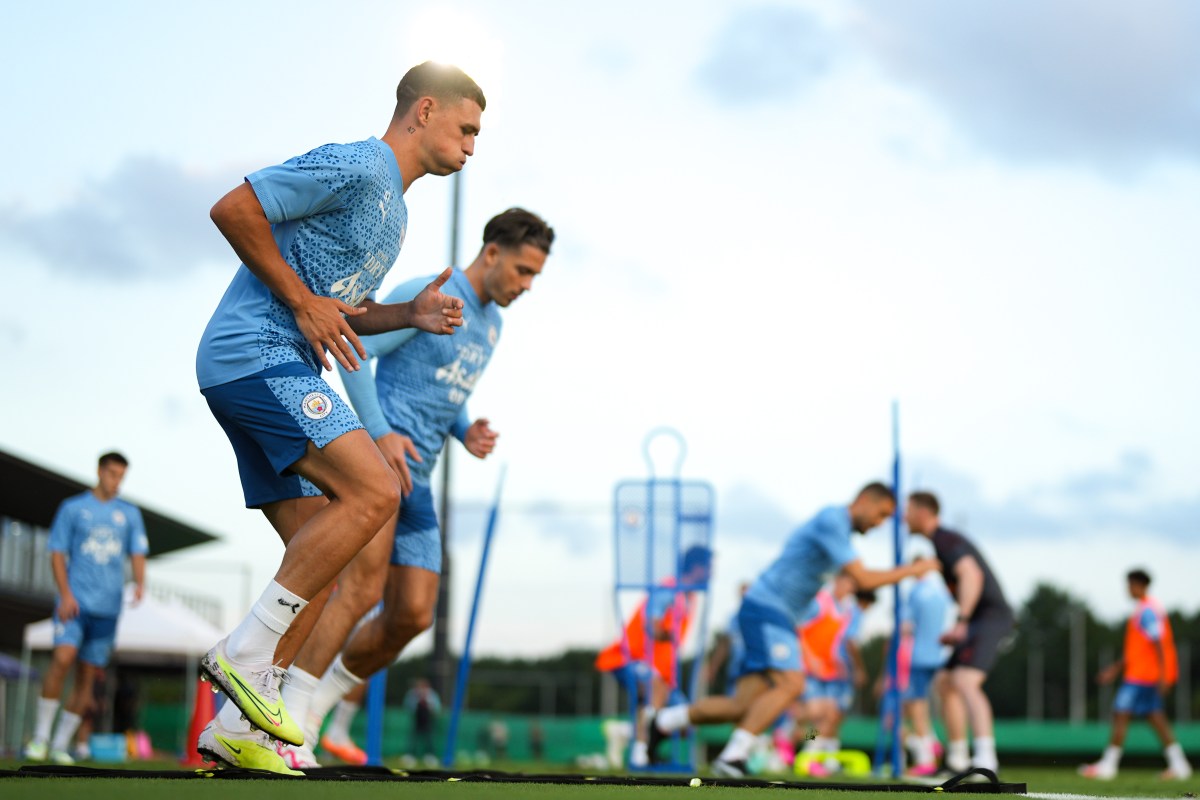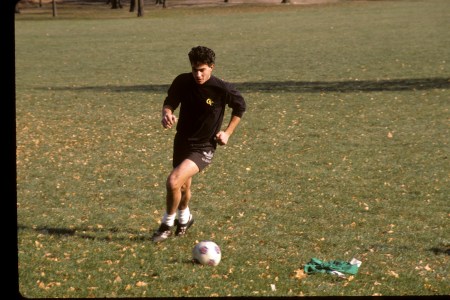Professional footballers do a whole lot of running. If you’ll excuse a bit of John Brenkus’ing — the average player in the English Premier League runs the equivalent of a 10K race in a 90-minute game, with some of the fittest midfielders pushing past 13 kilometers (or eight miles).
Even strikers, whose job description necessitates a bit of tactical cherry-picking, have been known to rack up the miles. Harry Kane covered nearly 400 kilometers last year, which, for some analysts, is as impressive as his 30 goals. It demonstrates a delicate mix of work rate, endurance, health and heart.
All those yards aren’t created equal, after all. The stop-and-start nature of the sport requires both steady-state jogs and all-out pursuits. Not easy to do. Little wonder that teams have tried and true methods for determining whether you’re cut out for it.
How to Get in Shape for Your Rec Soccer League This Fall
Coaches, trainers and referees on how to prepare for the season ahead. Hint: it’s less long-distance running than you might think.The English Premier League Fitness Test
This one comes to us courtesy of Jack Sharkey, who’s currently the sports science lead for the Australia women’s national soccer team. (Though when Sharkey explained this workout to fitness tracking lab Catapult back in 2021, he was still with EPL side Aston Villa.)
He shares in the video: “These ‘Premier League Runs’ are meant to develop aerobic capacity…they’re done across the country, and they’ve been around since the 1990s. There is not a professional footballer I have worked with that I have not expected [to be able] to do these runs.”
Sharkey’s ’90s comment is in reference to the Bolton Wanderers, who devised this test the same decade that they were twice promoted. Clearly, it either helped certain players get into fantastic shape, or rooted out those who weren’t, or both. (Which, by the way, is a good rule of thumb: any fitness “test” should also make for a great workout.) Here’s how it shakes out, with details on how to perform it yourself:
Stage One: “320s”
- Run a distance of 60 meters (or 65 yards) five times, back and forth. In the Catapult video, an Aston Villa assistant runs the distance from the top of one goal box to the other until finished. As pitches tend to vary in size, it might be easier for you to try this test at an American football field.
- Aim to run the distance in 70 seconds or less.
- Take a break for 70 seconds. Keep somewhat active so your hamstrings don’t tighten up.
- Repeat this for a total of six intervals, trying to hit the same splits every time. Heroics need not apply, it’s a long session.
- Take a two-minute break.
Stage Two: “120s”
- Once you’ve caught your breath, line back up in the same spot for the HIIT iteration of the previous effort. This time around, you’re only running 120 meters at a time (just an out and back).
- Aim to run the distance in 24 seconds or less.
- Take a break for 45 seconds. That’s a little more than you got in the first stage, to account for the intensity of the run.
- Repeat this for a total of six intervals. Bring your A-game here, as knocking these out takes some serious speed.
- Once those are done, so are you. By the end of the workout, you’ll have run over 2.5 kilometers.
Why It Works
Fitness tests should have clear and obvious relationships to the sports they’re testing for. This one makes perfect sense. (It reminds us of Steph Curry’s notorious heart rate drill, which involves charting a star across the court, and hitting eight of 10 three-pointers in 55 seconds or less.)
Professional footballers need be able to turn on a dime and chase down defenders, hence the workout’s there-and-back shuttle style, and its closing sprints. But they also need to train their bodies to remain calm in the face of cardiovascular torture, and make the most of a break here or there (like when an opponent’s rollicking on the ground, clutching a shin in mock agony).
In the end, all this running offers the greatest reward of all — less running. It’s not a coincidence that Manchester City, in a year that it won the first continental treble for an English club since 1999, had no footballers near the top of that “distance traveled” master list. High-quality substitutions helped, for sure, but the fitter you are, the easier it is to focus on technical fare and execute on a managers’ vision. Basically: you’ll hold onto the ball for longer. That means you’ll spend less time sprinting around in panic and (hopefully) much less time screaming at your teammates.
The Charge will help you move better, think clearer and stay in the game longer. Subscribe to our wellness newsletter today.


























